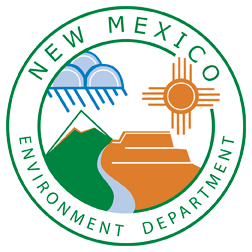LCRR Required Communication and Public Education
Communicating about lead and lead service lines can happen through multiple avenues. Communication methods such as websites, fact sheets, door-hangers and other tools can be effective in communicating LCRR public notification requirements. Specific communication materials may vary based on specific water system needs and compliance requirements. In general, most people may be particularly interested in understanding risk, testing results, and reducing exposure to lead from lead service line and home plumbing materials.
Property owners need information about existing lead service lines and will need an explanation of responsibilities for repair, the type of material of lead service line (such as lead, status unknown, or galvanized requiring replacement), and resources to assist with replacement. Every community and public water system will be different, so materials need to be customized for customers by considering how information is delivered.
The LCRR specifies required communication components and health effects language that must be used. That specific information can be found here. An overview of those requirements can be found in the following table.
| Health effects of lead | Exposure to lead in drinking water can cause serious health effects in all age groups. Infants and children can have decreases in IQ and attention span. Lead exposure can lead to new learning and behavior problems or exacerbate existing learning and behavior problems. The children of women who are exposed to lead before or during pregnancy can have increased risk of these adverse health effects. Adults can have increased risks of heart disease, high blood pressure, kidney or nervous system problems. |
| Sources of lead | (A) Explain what lead is. (B) Explain possible sources of lead in drinking water and how lead enters drinking water. Include information on home/building plumbing materials and service lines that may contain lead. (C) Discuss other important sources of lead exposure in addition to drinking water (e.g., paint). |
| Steps the consumer can take to reduce their exposure to lead in drinking water | (A) Encourage running the water to flush out the lead.(B) Explain concerns with using hot water from the tap and specifically caution against the use of hot water for preparing baby formula.(C) Explain that boiling water does not reduce lead levels.(D) Discuss other options consumers can take to reduce exposure to lead in drinking water, such as alternative sources or treatment of water.(E) Suggest that parents have their child’s blood tested for lead. |
| Explanation of elevated Lead Levels | Explain why there are elevated levels of lead in the system’s drinking water (if known) and what the water system is doing to reduce the lead levels in homes/buildings in this area. |
| Information on lead service lines | For systems with lead service lines, discuss opportunities to replace lead service lines and explain how to access the service line inventory so the consumer can find out if they have a lead service line. Include information on programs that provide financing solutions to assist property owners with replacement of their portion of a lead service line, and a statement that the water system is required to replace its portion of a lead service line when the property owner notifies them that they are replacing their portion of the lead service line. |
Translated LCRR communication materials
Public water systems with a large portion of non-English speaking customers may need to make their notifications available in multiple languages.
LCRR Templates for public water system notifications
Communication following an action level exceedance
Community public water systems may refer to the Lead and Copper Public Education page for public education for lead and/or copper following an action level exceedance. This includes templates for different types of communication that could be modified to support other communication needs.
Return to Lead and Copper Rule Revisions

